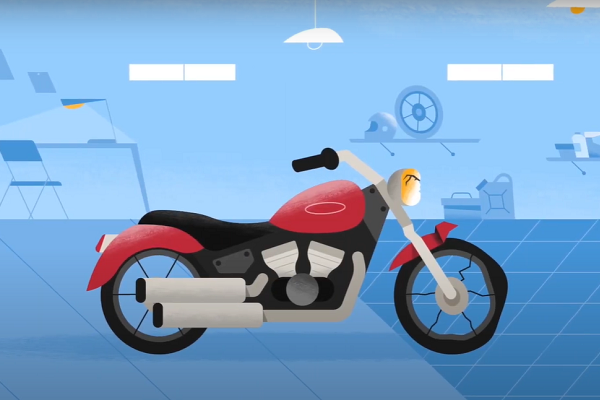What Type of Insurance is Best for Motorcycles?

Owning a motorcycle can be an exhilarating experience, but it also comes with its share of risks. Ensuring you have the right insurance coverage is crucial to protect yourself, your bike, and others on the road. With various types of motorcycle insurance available, it’s essential to understand the options to choose the best policy for your needs.
1. Liability Insurance
Liability insurance is the most basic and often legally required type of motorcycle insurance. It covers damages and injuries you may cause to others in an accident. There are two main components:
- Bodily Injury Liability: This covers medical expenses, lost wages, and other costs incurred by individuals injured in an accident where you are at fault.
- Property Damage Liability: This covers the cost of repairing or replacing property damaged in an accident, such as another vehicle or a building.
Liability insurance is essential for meeting legal requirements, but it does not cover damages to your own motorcycle or your medical expenses.
2. Collision Insurance
Collision insurance covers damages to your motorcycle resulting from a collision with another vehicle or object, regardless of who is at fault. This type of coverage is particularly important if you have a newer or more expensive motorcycle, as repair costs can be high.
While collision insurance can provide peace of mind, it typically comes with a deductible, which is the amount you pay out of pocket before the insurance kicks in. Choosing a higher deductible can lower your premium, but it also means you’ll pay more in the event of an accident.
3. Comprehensive Insurance
Comprehensive insurance covers damages to your motorcycle that are not the result of a collision. This includes incidents such as:
- Theft
- Vandalism
- Fire
- Natural disasters
- Falling objects
- Animal collisions
Comprehensive insurance is often paired with collision insurance to provide full coverage for your motorcycle. Like collision insurance, comprehensive coverage usually has a deductible.
4. Uninsured/Underinsured Motorist Coverage
Uninsured/Underinsured Motorist (UM/UIM) coverage protects you in the event of an accident caused by a driver who does not have insurance or whose insurance is insufficient to cover the damages. This type of coverage can be crucial, as it helps pay for your medical expenses and property damage when the at-fault driver cannot.
5. Personal Injury Protection (PIP)
Personal Injury Protection (PIP) covers medical expenses, lost wages, and other costs related to injuries you and your passengers sustain in an accident, regardless of who is at fault. PIP is mandatory in some states and optional in others. It can provide valuable coverage, especially if you do not have health insurance or if your health insurance has high deductibles or co-pays.
6. Medical Payments Coverage
Medical Payments (MedPay) coverage is similar to PIP but typically has lower limits and does not cover lost wages. It pays for medical expenses incurred by you and your passengers in an accident, regardless of fault. MedPay can be a good option if you want additional medical coverage without the higher cost of PIP.
7. Accessory Coverage
Accessory coverage is designed to protect custom parts and accessories you’ve added to your motorcycle, such as custom paint jobs, aftermarket exhaust systems, or specialty wheels. Standard insurance policies may not cover these additions, so accessory coverage can be a valuable addition if you’ve invested in customizing your bike.
Choosing the Best Insurance for Your Motorcycle
The best type of insurance for your motorcycle depends on several factors, including your budget, the value of your bike, your riding habits, and your risk tolerance. Here are some tips to help you choose the right coverage:
- Assess Your Needs: Determine what types of coverage are most important to you. If you have a newer or more expensive motorcycle, full coverage (collision and comprehensive) may be worth the investment. If you’re concerned about medical expenses, consider PIP or MedPay.
- Compare Quotes: Get quotes from multiple insurance providers to compare coverage options and prices. Online comparison tools can make this process easier.
- Review Policy Details: Carefully read the fine print of each policy to understand what is covered and what is not. Pay attention to deductibles, coverage limits, and any exclusions.
- Consider Bundling: Some insurance companies offer discounts if you bundle your motorcycle insurance with other policies, such as auto or home insurance.
- Evaluate Your Budget: Determine how much you can afford to spend on insurance premiums and deductibles. Keep in mind that choosing a higher deductible can lower your premium, but it also means you’ll pay more out of pocket in the event of a claim.
Conclusion
Choosing the best insurance for your motorcycle is a crucial decision that can provide peace of mind and financial protection. By understanding the different types of coverage available and assessing your specific needs, you can select a policy that offers the right balance of protection and affordability. Whether you opt for basic liability coverage or a comprehensive policy with additional protections, having the right insurance can help you enjoy your motorcycle with confidence.